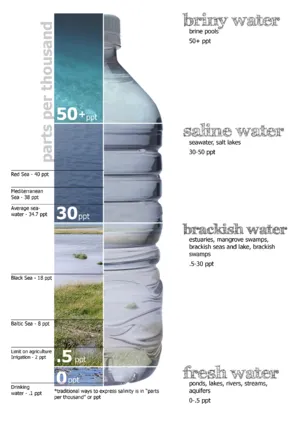Water
Humans and water hobbits have an affinity for water. While The Shire rainforest environment famously supplies over 11 feet of rainwater each year, keeping the aina lush and green, and blooming round the seasons, there is no naturally occurring surface water feature in the lands of Puna, except during floods, of course. That is because the land itself is holey. Holy, too, yes, sacred. But full of holes as well. Lava tubes carry underground streams to the sea. Groundwater percolates through many of the cindery, air-pocked rock layers like it would through a sponge. Only the dense blue rock of thick pahoehoe flows slows it down, or holds a bit in localized depressions in the flow. That is why we dream of building a series of ponds, connected by waterways and wetlands, in addition to water catchments, cisterns, warm ponds, hot tubs, bathtubs, and other water technologies.
One of the water technologies we look forward to developing is aquaponics, a combination of aquaculture and hydroponics for efficient utilization of resources for growing both plants and fish such as tilapia. Growing the plants in raised aquaponic beds with copper feet in a greenhouse environment produces perfect slug-free produce with zero-waste and minimal need for processing.

Graphic breakdown of water salinity, defining freshwater, brackish water, saltwater, and brine water. (Photo credit: Wikipedia)
Another water technology we are targeting to integrate into our systems as they roll out is the use of diluted seawater plus nitrogen (which can come from recycling the nutrients in urine or fish waste) as fertilizer. In high rainfall soils such as ours, nutrients are rapidly diluted and depleted simply by the amount of water flowing through the ecosystem. Seawater systems using a thirty to one dilution factor produce remarkably vital and nutritious plants, so this should be a valuable addition to the current state of the art in aquaponics practices. For example, wheatgrass juice grown in this way has none of the offensive or odd flavor and aftertaste caused by the plant's defense mechanisms triggered by environmental stresses in its growing conditions. We will experiment with homeopathic potency combinations called chords to produce the desired safe dilution of at least thirty to one, while at the same time effectively stimulating, balancing, and/or moderating the energetic effects of the sea minerals. This can be done by blending a 1X (10:1 dilution) base solution with about twice its volume of more dilute potencies, selected for their particular resonance effects, such as 5C (stimulation), 7C (balancing), and 9C (moderating). Additional potencies can be added for effects such as 12X for its resonance with the cell membrane.
Monitoring of protons (acid/alkaline balance, measured by pH), electrons (redox, measured by rH2 or ORP), and photonic energy (ionization, measured by conductivity) is yet another element that we intend to integrate as funding permits. Based on the work of French water health pioneer Louis-Claude Vincent, the field of Bio-Electronics of Vincent (BEV) is known in Europe as the Medicine of the Future because of its predictive value. The three measured values related to protons, electrons, and photons together determine the physics of energy in a fluid, whether biological (such as blood) or ecological, such as a pond or wetland. The actual microwatts of energy can then be calculated via the Nernst equation, and most importantly, the terrain is revealed by the balances of electrons and protons. This work is the basis of Glendalf’s teaching model called the Five Phases of Health, a roadmap for the journey from degenerative diseases back to balanced and vibrant health.
Currently, we purify filtered water for drinking using UV light to oxidize fungi, bacteria, viruses, and organic toxins, starting with rain catchment water collected on-site. We also bring in healing water from our Hilo Oasis, made by filtration and electrolysis, resulting in micro-clustered water that is a better solvent than other waters, and penetrates into the lymph and cells ten times better than normal filtered water. Being a better solvent, it carries nutrients to the cells and carries toxins away from the cells more efficiently. This special water is charged with electrons, making it an antioxidant (an electron donor by definition), much smaller and more efficient than any of the nutritional anti0xidants. By serving this function efficiently, the nutritional antioxidants, which we also count on to serve other functions such as cofactors for enzyme catalysis, are preserved for those other crucial functions. In addition, the water is highly alkaline, which helps reduce inflammation, supports detoxification, and frees oxygen for utilization. The reason plants and animals die from acid rain is due to the binding up of oxygen under those conditions of high proton concentration.
The other side of water, in what we like to think of as a marine environment, is simply keeping ourselves and our materials dry enough. Folks in these parts like to say you need a roof over your roof, such as a tarp over your tent, or over your car. Even many botanicals that we can grow here must be grown in a greenhouse in order to avoid damage from excess rainfall.
Beyond The Shire, even beyond Orchidland, in the realm of Orcland… we hear they add halogens to their water and then drink it! That means Chlorine and Fluoride! Yuck!! Chlorine is a deadly oxidizing agent. And fluoride was first added to water in Nazi concentration camps and Soviet Gulags to make prisoners dull and docile. No wonder Orcs are dumbed down… enough to sit in their boxes all day staring at smaller boxes… It makes a hobbit shudder to hear the tales…
